Built-in toilets: features and varieties, pros and cons
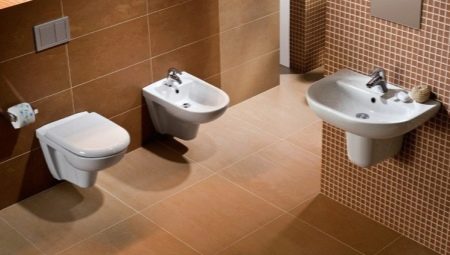
Modern apartment design is focused not only on beauty and style, but also on comfort. And this applies to absolutely all premises. The design of the bathroom is just as important as the living room or bedroom. Here, convenience becomes not a whim, but a necessity. Previously, this room was given a minimum of time, the main thing is that the plumbing works well. Now the requirements for such a technique have become different. In addition to practicality and high-quality, trouble-free operation, design is important.
Today in stores you can find toilet bowls for every taste, design and style. The way of embedding this technique has also changed - you can install a built-in model with or without installation. She, like any other, has its advantages and disadvantages.
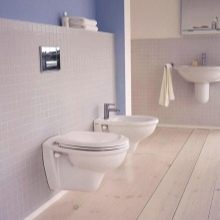
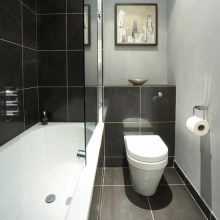
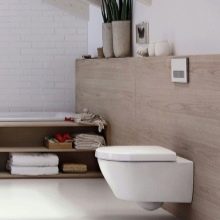
Main characteristics
A built-in type toilet is a structure in which only the bowl remains on the outside. The drain system, or cistern, is hidden in the wall. The model range and sizes allow you to choose the option that best meets all the requirements. You can build in a wall-hung toilet or place it traditionally on the floor, but hide the cistern and fittings. Much depends on the area, style, taste of the owners of the apartment, and all types of structures have advantages and disadvantages.
Suspended ones are easier to clean and have access to all areas. In addition, the floor stands are larger and take up a lot of space.
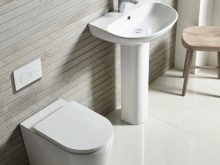
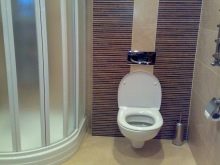
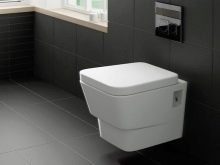
Only the toilet can be installed on a regular frame... The load on it is quite comparable to the weight of a structure and a person. In addition, there are also installations that allow you to build in a corner toilet or even a whole rail-type system - with a bidet, a sink. Any installation is a single system and consists of the following elements:
- frame;
- frames;
- the power unit to which the plumbing is attached.
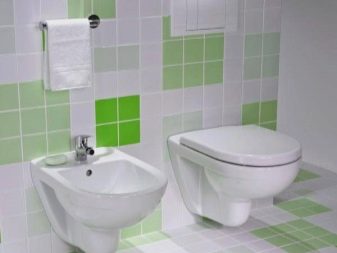
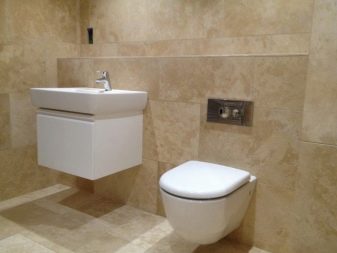
The dimensions can be absolutely any, the frame is attached in different ways in any part of the bathroom. The most common options are with installation on supports, that is, with wall-mounted fasteners. Such models are attached to load-bearing walls. There are options that are mounted on the floor. They have recently become increasingly popular, as they allow you to place the toilet where the owner needs it, regardless of the type of walls.
Size and space are not so important here, as the frame is fixed where needed and sits on the floor.
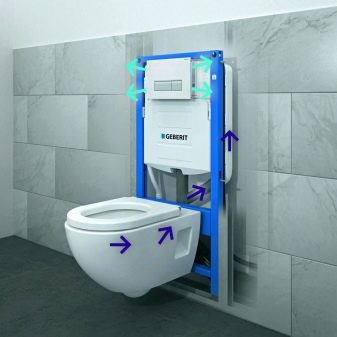
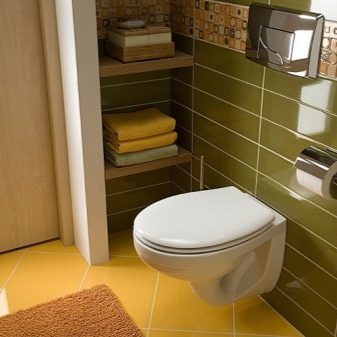
Built-in corner models - very popular in small spaces... They allow you to perfectly save space without cluttering the bathroom.
The built-in toilet is equipped with a cistern, which is ergonomic, that is, it does not consume a lot of water. This is the first thing buyers and sellers pay attention to. At the same time, the efficiency of flushing does not decrease, and the consumption is reduced by 2 times. So the rationale for embedded systems isn't just about saving space.
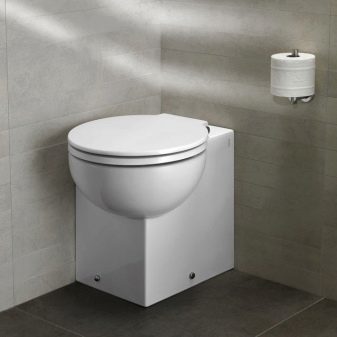
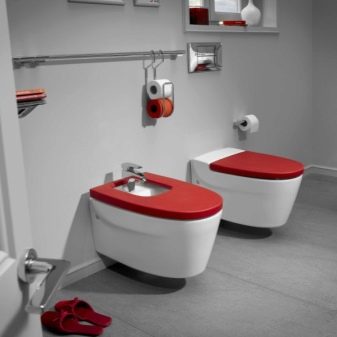
The built-in toilet system is such that the structural elements are as hidden as possible and access to them is limited. That's why build quality and model should not cause doubts among buyers... However, it is this type of plumbing that is considered the most durable, the term of trouble-free operation is the longest. In addition, the main elements can be replaced through the window behind the drain button. The most important parameters to pay attention to when choosing a model:
- the material from which the toilet is made;
- type of bowl, its shape;
- the dimensions of the room and the dimensions of the structure;
- bathroom style;
- budget opportunities.
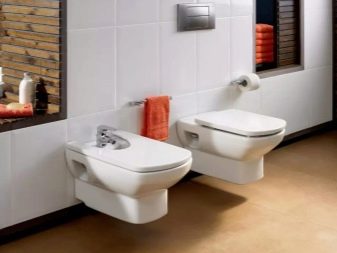
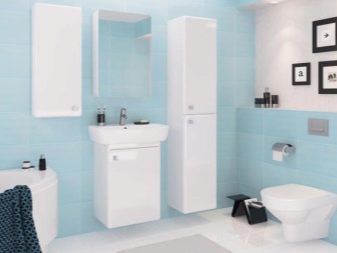
Advantages and disadvantages
Any model requires careful analysis. Each type of toilet has both advantages and disadvantages. In order not to be disappointed, you need to carefully weigh the pros and cons of built-in models.
Main pluses:
- fits perfectly into modern styles, for example, the popular minimalist;
- take up less space and visually make the room larger;
- cleaning in such a bathroom will be easier - there is access to absolutely all zones;
- you can safely equip heated floors in the bathroom, this is especially important for rooms combined with a bathroom, this creates additional comfort and coziness;
- floor tiles are laid out much easier, the integrity of the pattern, if any, remains unchanged;
- high qualities in terms of aesthetics: when communications are hidden, the room always looks neater;
- a drain built into the wall makes less noise;
- saving water subject to the installation of meters;
- access to communications during a malfunction can be obtained through the drain button hatch or leave other openings for this;
- reliability and durability.
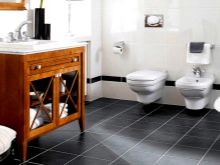
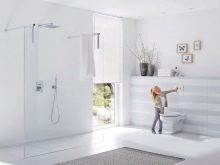
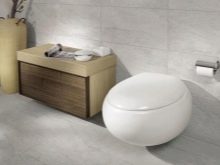
With all the obvious advantages, there are also disadvantages that must also be taken into account:
- installation, although not too complicated, requires more costs than a standard compact;
- financial costs in this regard increase;
- the price of a built-in type toilet is higher than usual;
- it is necessary to purchase additional elements that make up the installation system;
- not suitable for old houses with a high degree of wear and tear of communications, the load may be too large, it is true that they can be replaced, but this is still a separate expense item;
- despite all the tricks, access to communications is still difficult, especially for pipes hidden behind a wall, there are situations that require complete dismantling.
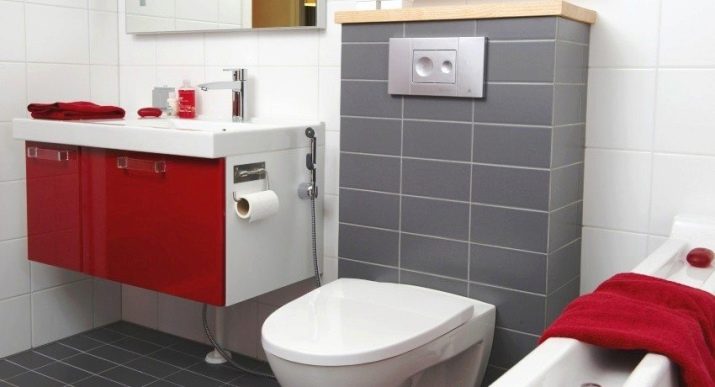
Types of structures
It has already been mentioned that a wall-mounted toilet can be floor-standing or wall-mounted. These two main types of plumbing are quite widely represented on the modern market. As for the installation structures, they are divided into 2 types.
- Blocky view. This installation is the most budgetary, simple, takes up little space and is located in a wall niche. The fittings and the toilet itself are attached to it, then the block frame is sewn up with plasterboard and trimmed with tiles or other materials. This option is not suitable for weak walls made of wood, foam blocks.
- Frame view. This type of installation is more complicated and more expensive than the previous one. In fact, it is a steel frame, coated with special anti-corrosion agents. A toilet bowl is hung on this overall structure. The main advantage of such a system is that installation can be carried out in any accessible place.
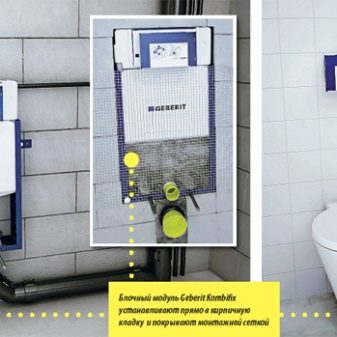
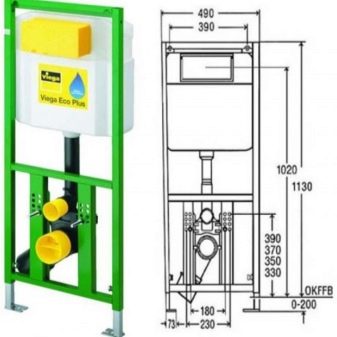
The type of fasteners is also very important:
- for weak walls, the floor version is suitable;
- a wall system is perfect for carriers;
- there is also a combined type of fasteners, when the structure is fixed both on the wall and on the floor.
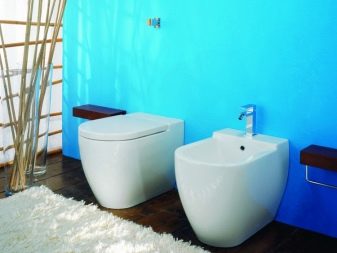
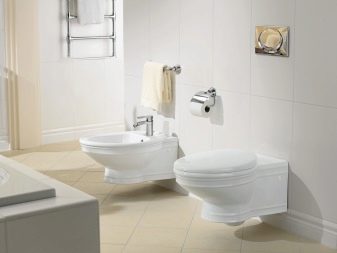
It is very important to take into account the location of the plumbing when choosing structures. Systems can be:
- angular, they are fixed at the junction of two walls, with a slope;
- traverse system, allows you to install a toilet with a bidet function.
When choosing such system designs, you should also pay attention to the cistern. They are built into the wall and are connected to both suspended and attached types, remaining invisible to the eye. Only the flush button is located on the surface of the wall. It is better if there are two of them - for partial and complete flushing.
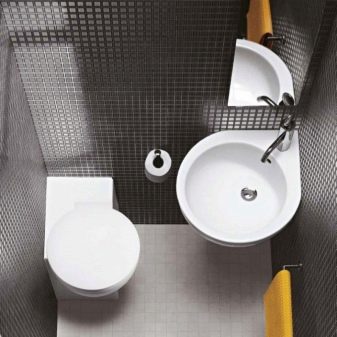
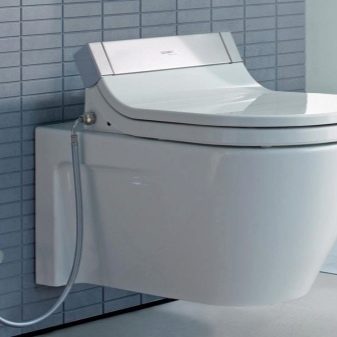
Types and shapes of bowls
To make the operation of the bathroom comfortable and the installation not complicated, it is important to choose the correct bowl shape. Built-in toilets can be:
- oval;
- square;
- rectangular;
- rounded.
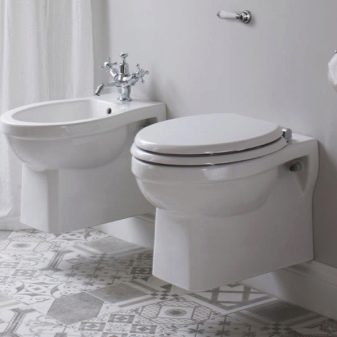
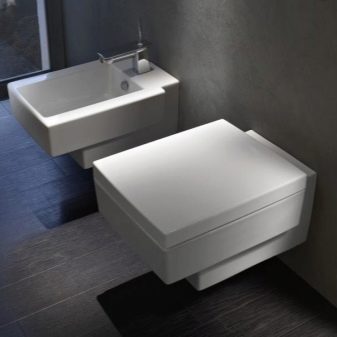
Traditional shapes are preferred in terms of style and design and are versatile. Squares and rectangles look best in modern directions - hi-tech, minimalism.
Also, a built-in toilet can have a bowl:
- disc-shaped - with a platform inside, it does not allow water to splash, but is not too hygienic;
- funnel-shaped - with a drain in the center, it is considered very convenient;
- visor - where the drain with a bend is located to the side is considered the best option, since it combines all the advantages of the previous two.
When choosing the shape of the bowl, be sure to take into account the characteristics and needs of all household members.
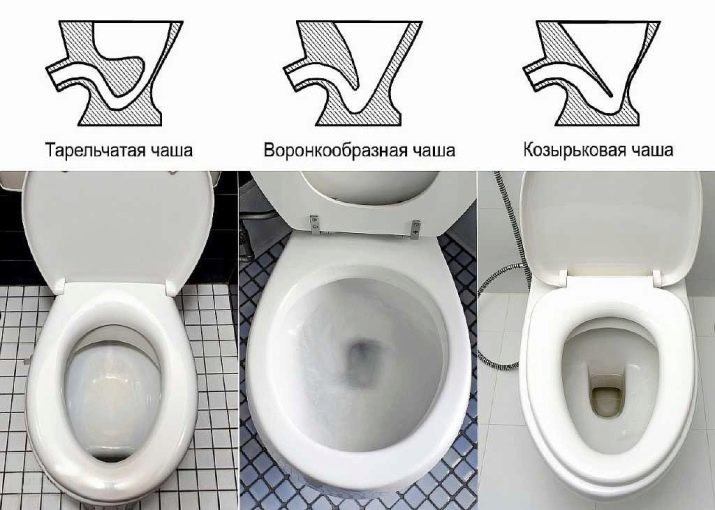
Manufacturing materials
Embedded systems can be made from a wide variety of materials. The differences concern not only appearance, but also technical features. The price range is quite large and largely depends on the material.
- Faience... Such models are very popular and in demand, perhaps they can be considered the most common. They are budgetary, strong, durable. However, earthenware is a porous material, so cleaning will be somewhat more difficult. However, there are enough models on the market today that have been treated with a coating that repels dirt.
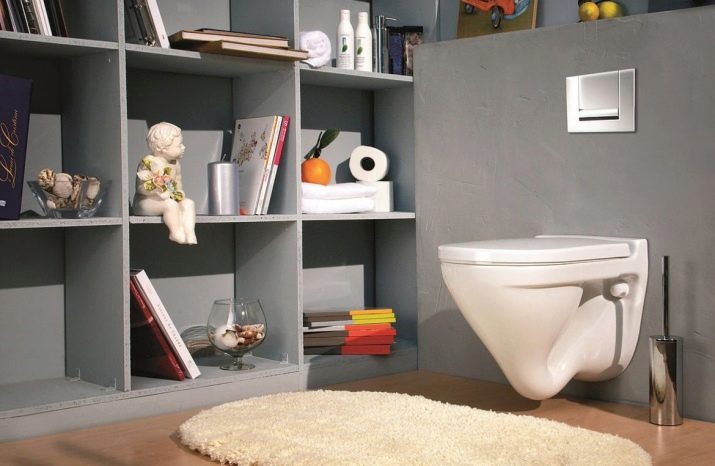
- Porcelain. A smoother and more practical material in terms of material, it is easier to clean such a toilet. In addition, porcelain models can be produced not only in monochrome, but also with ornaments.
The main disadvantage is the high cost, especially in comparison with faience. In terms of aesthetics, durability and practicality, there are no complaints about them.
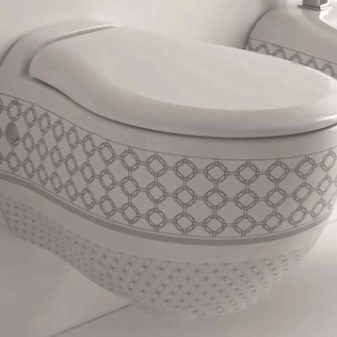
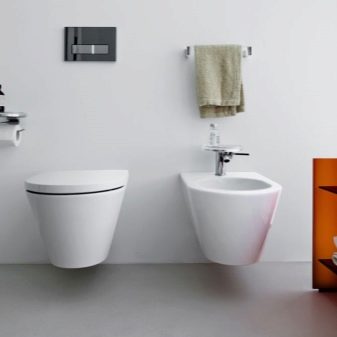
- Plastic. Such models are most often chosen for suburban options. They are lightweight, durable and affordable.
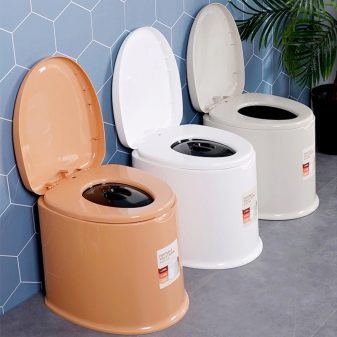

- Glass. Glass toilets are fragile, expensive and generally not very practical. But the variety of design possibilities make them quite popular.
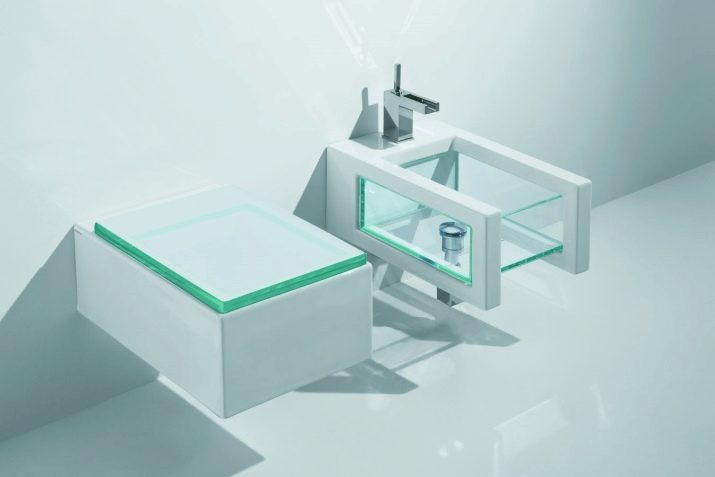
Installation recommendations
Modern types of installations allow you to place the toilet anywhere in the bathroom. However, it is very important to consider the location of the sewage system itself. A competent specialist has the necessary knowledge and will immediately reject options where the location will be inconvenient or impossible. The editing algorithm itself is as follows.
- Strength check stage... Pipes, floors, walls, communications are evaluated, deficiencies are identified, eliminated, pipes are changed - as needed. Don't underestimate this step.Replacing pipes after repairs, eliminating leaks will require dismantling the wall and the built-in structure.
- Creating a niche in the wall. It is necessary to bring sewer pipes to it. Therefore, choosing a niche location is a crucial moment.
- Mounting the installation... It is mounted on the floor or wall. A tank in the form of a plastic canister with a thermo-jacket is located in the wall.
- Then it is summed up cold water supply, the tank is connected.
- Disguise. The system is hidden by plasterboard, then the finishing is done in accordance with the general style and design. The flush button is installed.
- The installation of the plumbing itself, the isolation of the studs occurs at the final stage.
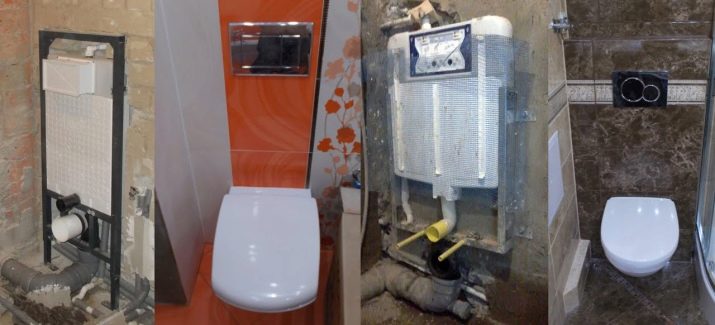
It is very important to provide access to communications. A professional will definitely leave the access hatches to the pipes, otherwise breakdowns will lead to sad consequences for repairs.
Each stage requires certain skills and attention, since the durability of the structure depends on it.
For information on how to install a built-in toilet, see the next video.








